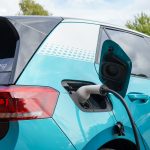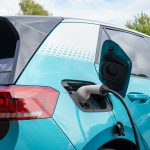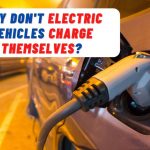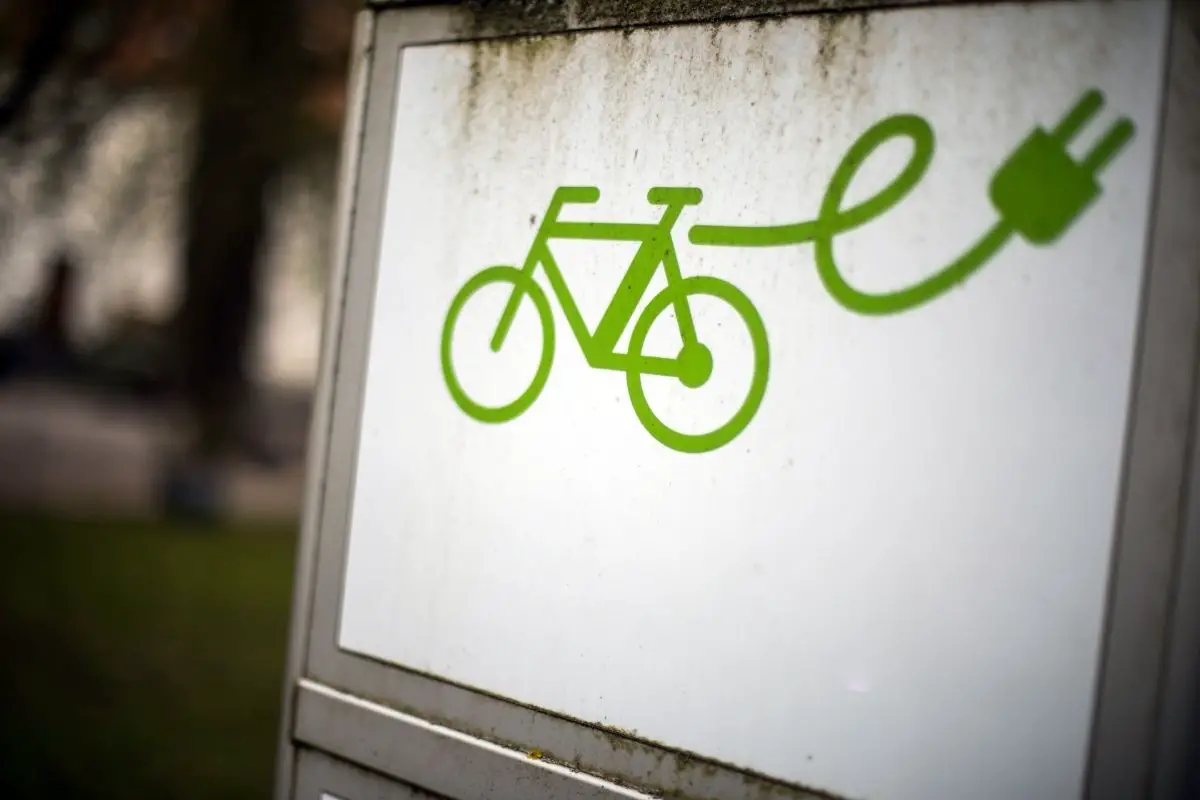Last Updated on February 7, 2023 by
An EV can be charged with with off-grid solar. The easiest way is to use the slow-charge adaptor cable and feed it through a solar inverter connected to a solar array. Slow charging needs about 1.6kW of power or 7 amps AC for 31 hours for complete recharge (Peugeot e208). A minimum of 3000 watts of solar panels would be needed.
How long to charge your electric car with solar panels? Calculator
For this example I’ll use 3000 watts of off-grid solar power, as there are considerable system losses associated with solar arrays (up to 25%). This amount of solar PV should easily deliver around 1.6 kW on a reasonable sunny day.
Enter the size of your EV battery in kWh into the calculator below to see how long it would take to charge your car:
Important notes:
- The calculator assumes the battery is flat, but this is almost never the case. The average commute in USA is about 30 minutes, I’m allowing 1.5 hours of driving. In this case the charge time would be based on about 30% discharge, so would be 3 times faster than the calculator shows
- Solar panels only deliver peak power in full sunshine. The calculator doesn’t take into account night-time hours or the use of batteries during the times when solar doesn’t work. An off-grid battery pack will almost double the price of a solar EV charging station – check out this post for a detailed design discussion – Solar EV Charging Station Design
Electric vehicles have taken the automobile world by storm in recent times. They are no longer toys that a small niche of tech-inspired people can use.
Electric vehicles are a wonderful alternative for climate-conscious people. And the great news is that you can charge them using your off-grid solar panels.
What is off-grid EV charging?
The growing levels of pollution in the environment have started taking their toll on human life. Illnesses and diseases related to polluted air are on the rise all over the world.
As this threat to our climate and our lives becomes greater, a growing number of people are reacting. Since the major polluters are cars and industrial power generation, it makes sense to start from them.
Will charging electric cars overload the power grid?
Many climate-conscious people are going ‘off-grid’ for their power needs. As the term suggests, this means that they are no longer drawing their electric power from the conventional power grid.
But modern technology and life is almost impossible without electricity. So, these people rely on renewable sources of energy like wind power from wind turbines or solar power.
These days technicians and experts help set up a solar-powered electric vehicle charging station. Using solar power to charge an electric vehicle makes it off-grid and pollution-free.
Parts needed for a DIY solar EV charging station
In principle, the idea sounds quite straightforward. Solar panels help convert the Sun’s energy into usable electrical energy that can charge an electric vehicle.
But it’s not about getting some solar panels and connecting them to your car. Here’s what you need to get started:
- Solar Panels: They are the main ingredient in the mix. They help convert solar power into electricity.
- Solar Inverter: This gizmo plays a vital role in the solar charging mechanism. It converts the DC current from the solar panels into usable AC current (like you get in your home).
- Charge Controller: This device helps control the charge coming from the system. Too little is obviously not enough, too much and the delicate circuitry in your car might be damaged.
- Batteries: The Sun is out for anywhere between 8 and 14 hours in most places, helping the solar panels generate electricity. Batteries store the electricity to be used later.
- EV Supply Equipment: Electric vehicles do not come with standard plugs and devices. The batteries are connected to special supply equipment that can help charge these vehicles.
There are several guides out there on how to build a DIY solar charging station for your electric vehicle. Do read them, as they may offer helpful tips on getting it up and running.
What Are Stand-alone EV Charging Stations?
Electric vehicles are the next big step in the way people commute between places. Whether you think about short or long distances, electric vehicles are fast becoming the best choice in the market.
Unlike conventional vehicles that burn fossil fuels and generate pollution, electric vehicles use electricity to get around. But this electricity must come from somewhere too.
What does non networked charging station mean?
A regular setup would involve vehicle owners paying the car manufacturers to install an electric vehicle charging station that connects to the grid supply. This system draws power from the grid.
There is a problem with such a setup. It is completely reliant on the power grid – if the grid goes down, your electric vehicle stops charging.
Off-grid electric vehicle charging stations offer a reliable alternative. They use renewable energy sources like solar and wind to generate the electricity used to charge your electric vehicle.

Since they are not connected to the grid, some people call them ‘stand-alone’ charging stations. There may be some other definitions for this term too, involving a network of stations sharing data.
Using an Off-grid Solar Ev Charging System
Solar panels are the most popular technology that humans have developed to access renewable energy. The numbers clearly indicate how popular solar power is these days.
There are different ways in which people set up their solar panels. Some choose the so-called ‘on-grid’ setup where the excess energy their panels produce can be sold to the grid companies.
But the ‘off-grid’ setups are also very popular. Such a setup would let you live entirely disconnected from the grid.
Using an off-grid solar system to charge your electric vehicle is not impossible, but can have some issues. If your charging setup is connected to your home grid, you may need to make some changes.
EV Charger Battery Storage Basics
Most electric cars have a range of around 180 to 250 miles, with some ranging even higher. So, every few days, you will need to charge your car – like filling it with gas when the tank gets low.
Charging your electric vehicle is not too different from charging your phone. But there are some key differences.
There are different levels of charging capacity, each higher level giving a quicker charge than the previous lower level. These are the key points to remember:
- Level 1: This is the lowest level of electric vehicle charging assembly. It charges the vehicle using a 120 V supply (like your home grid supply) and gives 3 to 5 miles of range per hour.
- Level 2: This is the most common electric vehicle charger assembly currently. It uses 240 V to generate up to around 19 kW of power to give almost 12-80 miles per hour charge.
- Level 3: This is currently the most advanced and fastest charging assembly. It uses direct current (unlike the previous two AC setups) to give up to 3-20 miles per minute recharge.
If you want to use a solar setup to charge your electric vehicle, you would need to use batteries. Batteries can be configured in a ‘power-wall’ setup for maximum efficiency and space utilization.
Such a setup can help store the extra power the solar panels generate when your car is not plugged in.

Latest EV Charging Innovation
Technology always moves forward through bold and daring innovation. Everything from cellphones and Bluetooth to solar panels and electric vehicles comes from human innovation.
This innovative spirit guides how people think about electric vehicles and their charging systems. Here is a quick look at some of the latest trends in electric vehicle charging systems:
- Wireless Charging: You have seen wireless charging on your phone using magnetic induction coils. What stops electric vehicles from using the same tech on a larger scale?
- Pavement Chargers: A London company has a novel solution to the urban clutter of charging stations. They use pop-up chargers that are usually hidden under the pavement.
- Roadside Charging: Broadband connections require cabinets placed on streets. A German telecom company has added charging capabilities to their boxes, making chargers common.
- Reuse Existing Infrastructure: There is hardly anything more common on the streets than streetlights. The EU plans to convert 10 million of these light poles into charging units.
- Smart Batteries: Many people complain notice that charging electric vehicle batteries in winter can take hours. Self-heating batteries may improve winter performance by miles.
- Electric Roads: A Swedish pilot project sees the installation of electric rails in the middle of the road. A moving arm of the electric vehicle can tap into it and charge the vehicle on the go.
Can You Charge Ev Directly From Solar?
A Level 1 charging system can draw around 1.4 kW of power, while a Level 2 charging system may need about 7.2 kW. That is somewhere between an electric water heater and an electric furnace.
It is certainly possible to charge an electric vehicle using a solar panel. Most individual panels can easily give around 400 W of power.
Using an efficient array of solar panels with some of the latest technology can greatly boost the power output. Solar power systems can indeed help charge an electric vehicle.
Off-grid Tesla Charging
Tesla allows users to use the grid and their own solar panel arrays to power their Tesla vehicle. Their app has several features that help people efficiently use their solar panel charging systems.
The Tesla App has a feature called ‘Go Off-Grid‘ to allow users to simulate how their charging system would work if the grid fails. It helps you ensure that your solar charging system is functional.
Key points video
FAQ Relating to Charging an EV With Off Grid Solar
Many people are turning to electric vehicles due to an increasingly polluted environment. Naturally, the next step is to think about going off the grid and using renewables to charge your vehicle.
While wind energy currently generates more power commercially, homeowners operating on the smallest scale of the power grid prefer solar power.
It is no surprise that people are looking to charge their electric vehicles off the grid using solar power.
How Many Solar Panels Does It Take to Charge an EV?
The amount of power required to charge an electric vehicle is function of its battery size. A Tesla Model S can be a good baseline given its popularity.
Assuming even the most conservative data for a small 250 W solar panel, it may take around 12 panels to meet your daily charging needs.
Is There a Solar EV Charger?
Electric vehicles can certainly be charged using a solar panel system. Advanced charging options such as Level 2 charging may require some modifications, but it is a viable option.
It allows you to go completely off the grid with your electric vehicle’s charging needs. A lucrative option given current grid power rates.
Why Can’t Electric Cars Have Solar Panels?
The crux of this problem lies in the size of the cars and the efficiency of solar panels. Solar panels are around 15 to 25%, so they cannot produce enough power when placed on the car.
However, manufacturers like Sono are working to improve solar-powered vehicles.
Related topics
Solar electric car
Rooftop solar system
Solar charge controllers
Electric car charger
Combined solar inverter
Inverter review solar
Electric vehicle supply
Off-grid electric vehicle charging
Vehicle supply equipment
Off grid solar charging
Vehicle charging stations
- Why Electric Vehicles Are Not Popular - January 29, 2023
- How Long Do Tesla Batteries Last Per Day? Battery Facts - January 25, 2023
- Do Electric Vehicles Have Air Conditioning? - December 21, 2022










